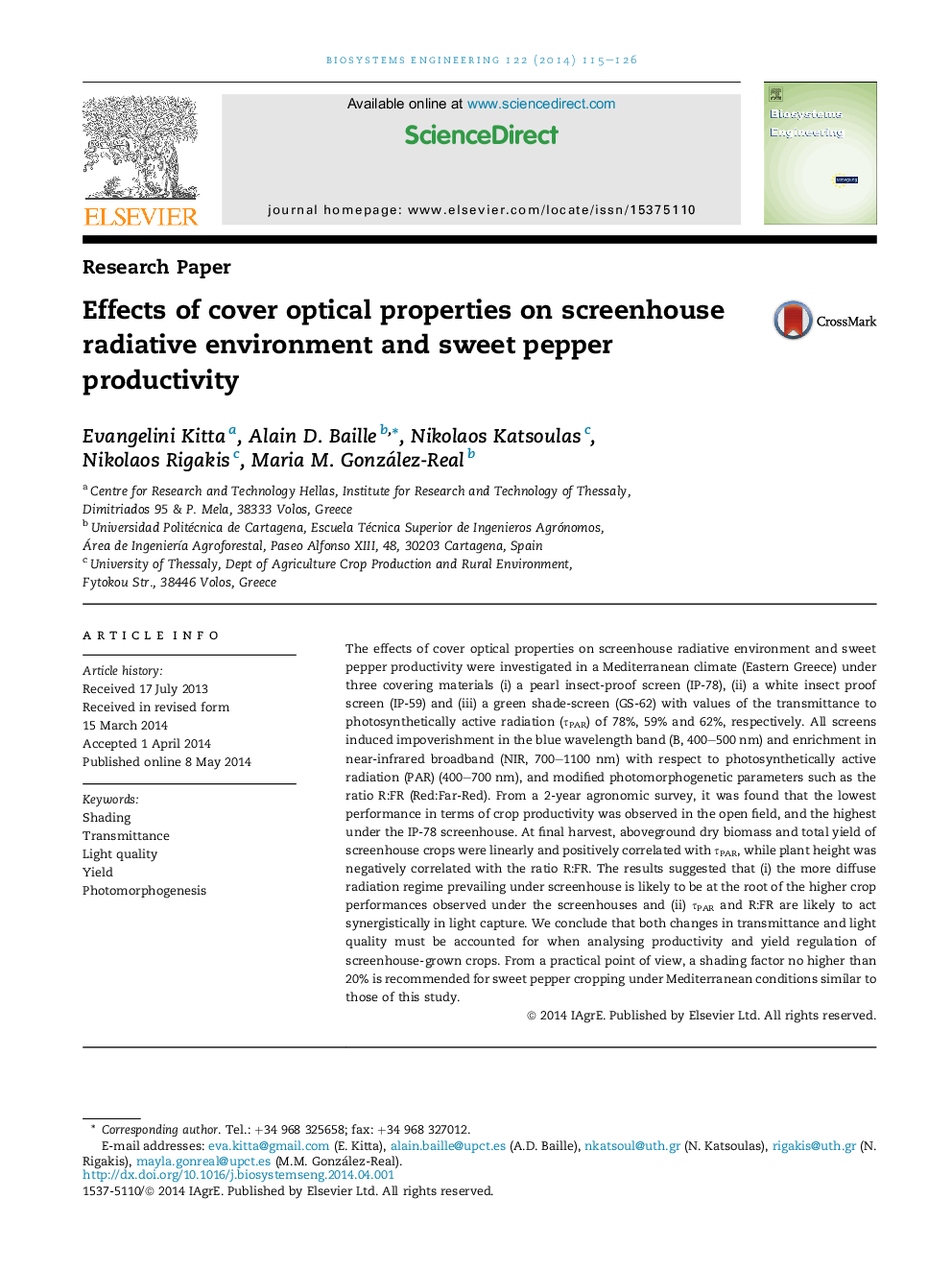| کد مقاله | کد نشریه | سال انتشار | مقاله انگلیسی | نسخه تمام متن |
|---|---|---|---|---|
| 8055190 | 1519539 | 2014 | 12 صفحه PDF | دانلود رایگان |
عنوان انگلیسی مقاله ISI
Effects of cover optical properties on screenhouse radiative environment and sweet pepper productivity
ترجمه فارسی عنوان
اثر خواص اپتیک پوشش در محیط رادیویی فرسایش و بهره وری فلفل شیرین
دانلود مقاله + سفارش ترجمه
دانلود مقاله ISI انگلیسی
رایگان برای ایرانیان
کلمات کلیدی
سایه عبور، کیفیت نور، بازده، فتومورفولوژی،
موضوعات مرتبط
مهندسی و علوم پایه
سایر رشته های مهندسی
کنترل و سیستم های مهندسی
چکیده انگلیسی
The effects of cover optical properties on screenhouse radiative environment and sweet pepper productivity were investigated in a Mediterranean climate (Eastern Greece) under three covering materials (i) a pearl insect-proof screen (IP-78), (ii) a white insect proof screen (IP-59) and (iii) a green shade-screen (GS-62) with values of the transmittance to photosynthetically active radiation (ÏPAR) of 78%, 59% and 62%, respectively. All screens induced impoverishment in the blue wavelength band (B, 400-500Â nm) and enrichment in near-infrared broadband (NIR, 700-1100Â nm) with respect to photosynthetically active radiation (PAR) (400-700Â nm), and modified photomorphogenetic parameters such as the ratio R:FR (Red:Far-Red). From a 2-year agronomic survey, it was found that the lowest performance in terms of crop productivity was observed in the open field, and the highest under the IP-78 screenhouse. At final harvest, aboveground dry biomass and total yield of screenhouse crops were linearly and positively correlated with ÏPAR, while plant height was negatively correlated with the ratio R:FR. The results suggested that (i) the more diffuse radiation regime prevailing under screenhouse is likely to be at the root of the higher crop performances observed under the screenhouses and (ii) ÏPAR and R:FR are likely to act synergistically in light capture. We conclude that both changes in transmittance and light quality must be accounted for when analysing productivity and yield regulation of screenhouse-grown crops. From a practical point of view, a shading factor no higher than 20% is recommended for sweet pepper cropping under Mediterranean conditions similar to those of this study.
ناشر
Database: Elsevier - ScienceDirect (ساینس دایرکت)
Journal: Biosystems Engineering - Volume 122, June 2014, Pages 115-126
Journal: Biosystems Engineering - Volume 122, June 2014, Pages 115-126
نویسندگان
Evangelini Kitta, Alain D. Baille, Nikolaos Katsoulas, Nikolaos Rigakis, Maria M. González-Real,
